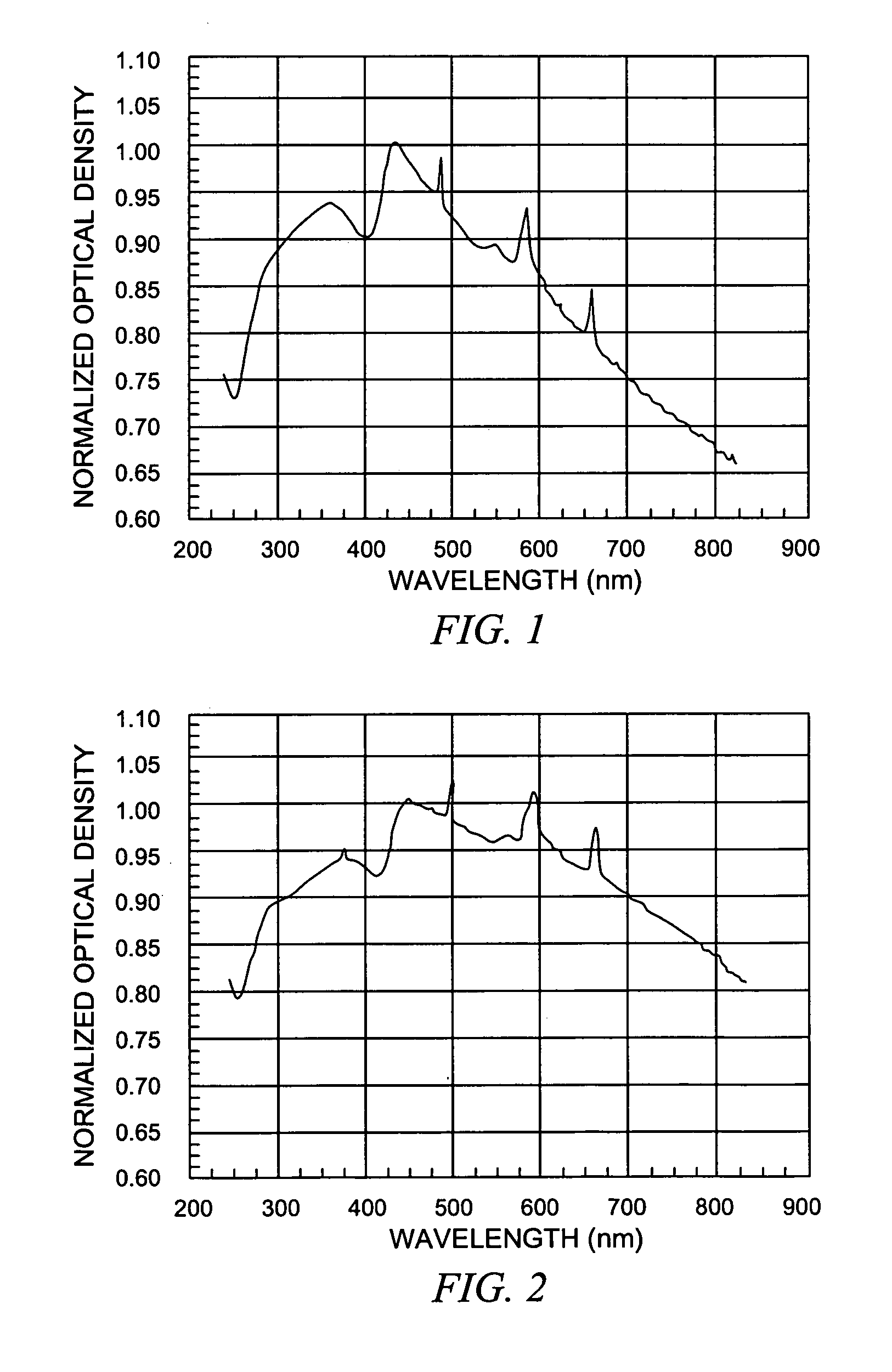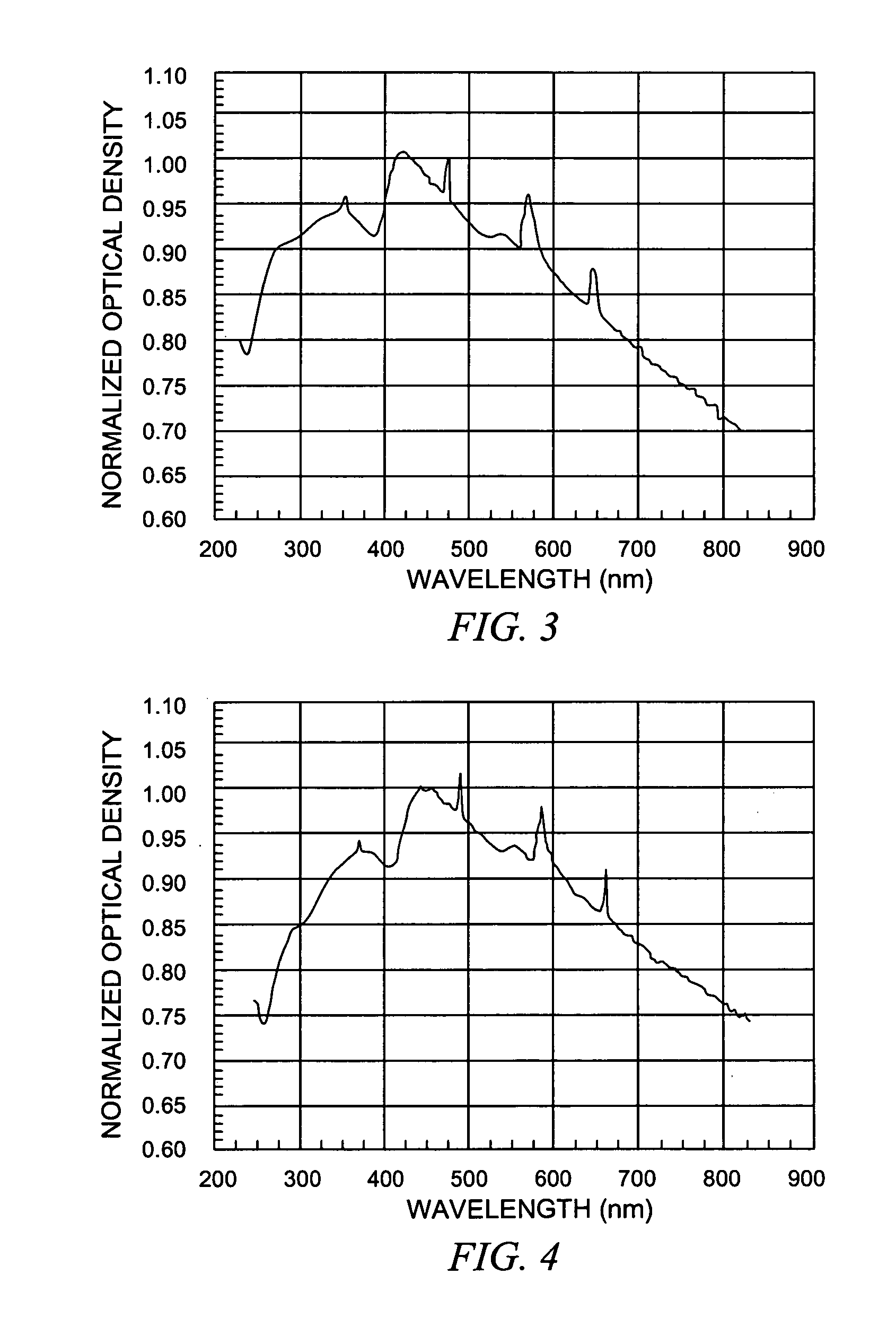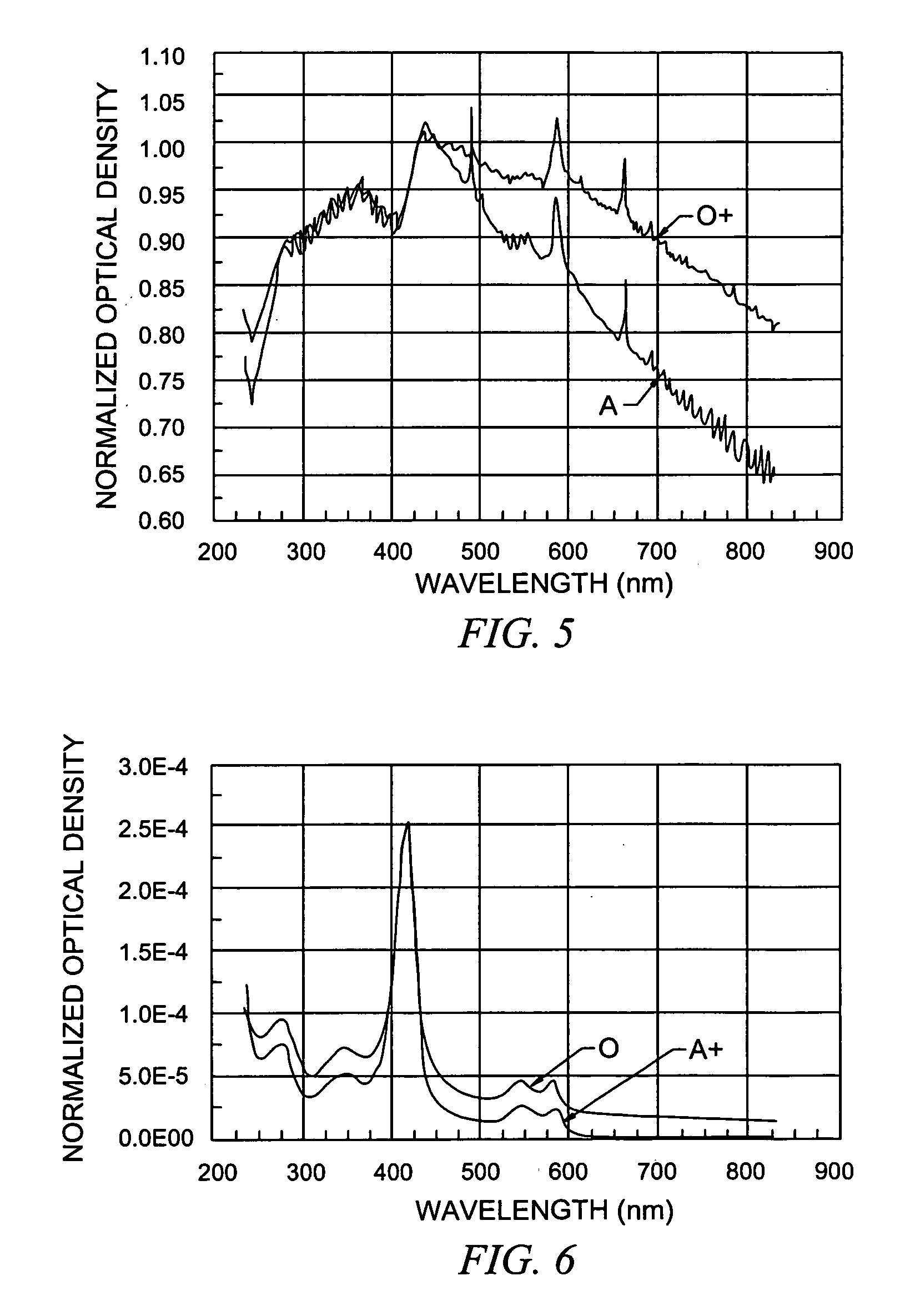Spectrophotometric method for determining the viability of a sample containing platelets
- Summary
- Abstract
- Description
- Claims
- Application Information
AI Technical Summary
Benefits of technology
Problems solved by technology
Method used
Image
Examples
Embodiment Construction
[0057]A description of the preferred embodiments of the present invention will now be presented with reference to FIGS. 1–15.
THEORETICAL BACKGROUND AND DEVELOPMENT
Dilute Dispersions
[0058]The optical spectral extinction of a particle dispersion such as whole blood or a sample of blood components contains information that, in principle, can be used to estimate the particle size distribution (PSD) and the chemical composition of the suspended particles. A large number of techniques for the estimation of the PSD from transmission spectra have been reported (van de Hulst, 1957; Kerker, 1962; Rousseau, 1984). Unfortunately, most of these techniques require that either the form of the PSD be known a priori, or that the shape of the PSD be assumed (Zollars, 1980; Melik and Fogler, 1983). More recently, regularization techniques (Towmey, 1979; Golub, 1979; Tarantola, 1987), applied to the solution of the transmission equation (Elicabe and Garcia-Rubio, 1990), have been demonstrated to yield ...
PUM
 Login to View More
Login to View More Abstract
Description
Claims
Application Information
 Login to View More
Login to View More - R&D
- Intellectual Property
- Life Sciences
- Materials
- Tech Scout
- Unparalleled Data Quality
- Higher Quality Content
- 60% Fewer Hallucinations
Browse by: Latest US Patents, China's latest patents, Technical Efficacy Thesaurus, Application Domain, Technology Topic, Popular Technical Reports.
© 2025 PatSnap. All rights reserved.Legal|Privacy policy|Modern Slavery Act Transparency Statement|Sitemap|About US| Contact US: help@patsnap.com



